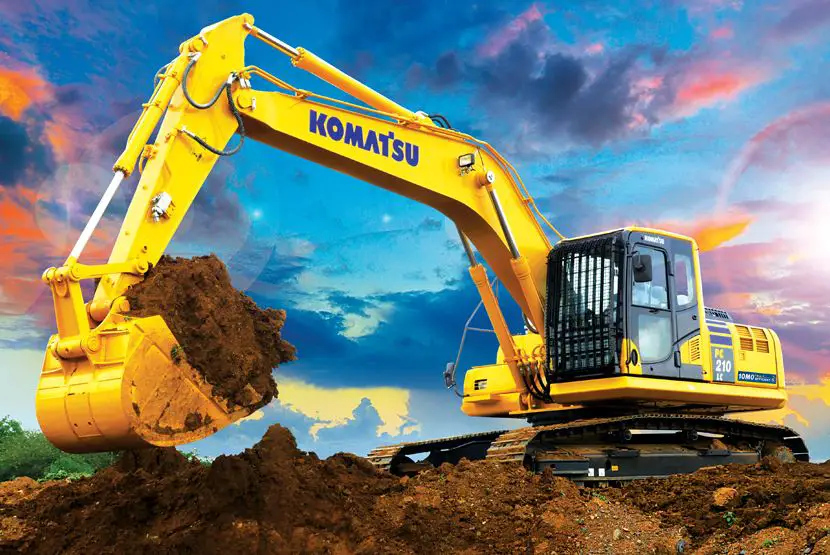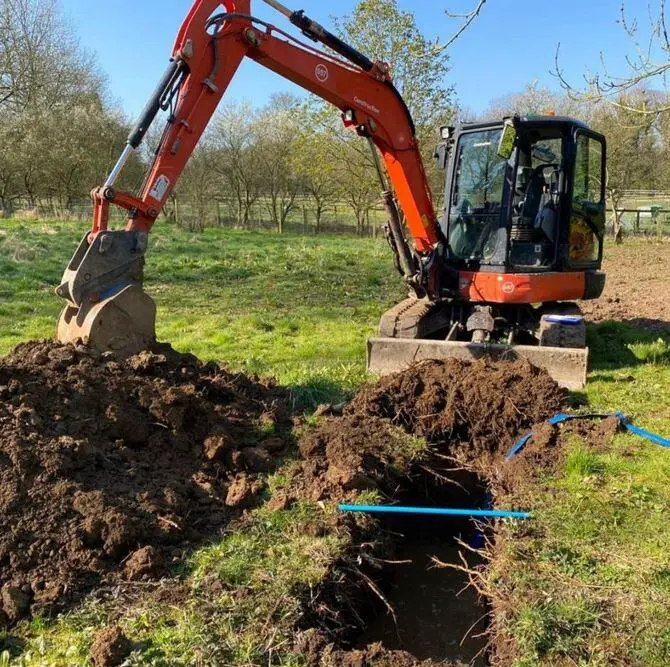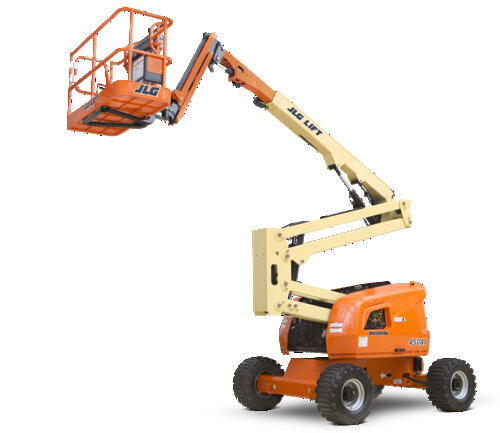Excavation and remediation equipment plays a major role in construction, mining, and especially in environmental management, where the need to move soil, take out contaminants, and leave the working site safe and clean is paramount.
There are several pieces of specialized equipment targeted to carry out different tasks; hence, the selection of the right equipment will enhance project efficiency, promote safety, and reduce environmental impact.
This article presents a general overview of excavation and remediation equipment, including how each works, why they are needed, and tips for selecting the right tools for any given project need.
Excavation Equipment and Their Role in Construction-Site Preparations
They are built for both precision and power; hence, they form a very important part of site preparation, foundation digging, and clearing the land from previous obstacles. Various types of machines can fulfil several types of requirements based on various needs of multiple construction and development projects of infrastructure.
1. Excavators
Excavators are multi-purpose machines intended to perform hard work, which involves lifting heavy weights, digging, and demolition. They can change their application with hydraulic arms that can provide support for several attachments. They include:
- Crawler Excavators: With their design for stability on rough and uneven surfaces, they work great on unsmooth terrain and rock-laden landscapes.
- Wheeled Excavators: Built for easy mobility and thus easier to navigate on paved areas, these find their main application in urban areas where jobsite-to-jobsite transportation is more frequent.
- Mini Excavators: Small and productive, mini excavators are suited for restricted areas, such as in the residential area and landscaping where large machinery may be unwieldy.

2. Backhoe Loaders
Backhoe loaders have been specially designed with a loader at the front and a backhoe behind. It is so versatile with this dual functionality for minor excavation tasks: digging trenches, soil translocation, and light demolition.
3. Bulldozers
Powerful, with broad, flat blades, and designed primarily for pushing over material and levelling grounds. Therefore, they are basically useful in site preparation, considering their ability to push through dense terrain and clear big swaths of land.
4. Trenchers
Trenchers are specialty machines for making narrow and deep trenches usually for laying cables, pipes, or other utilities. They come in several types:
- Chain Trenchers: These are fitted with rotating chains and thus designed to penetrate the most forbidding soils and tackle rocky bottoms.
- Micro Trenchers: Compact, accurate, and fast, these trenchers find their ideal application in downtown areas where narrow cuts are required, as in the case of telecom installations.

5. Boom Lifts
A boom lift is indispensable for accessing elevated work areas with high speed and without the risk of a fall in construction and maintenance work or in industrial facilities. They afford high access to tasks such as high-level painting, inspection and repair work where erector sets or ladders cannot reach. There are a number of types and sizes of boom lifts for sale available for companies requiring the equipment.

Whether to purchase or let depends on the requirements of the project in question. It also enables contractors to have easier, controlled access to areas such as ceilings with the assurance that work in the particular region will be accurate.
Remediation Equipment
Environmental Issues of Concern Clean up polluted sites, restore the ecosystems, and reduce pollution with the use of environmental remediation equipment so that various companies can make use of harmful materials or can operate in hypersensitive areas.
Soil Remediation Equipment
Soil remediation refers to the elimination, reduction, or neutralization of contaminants from the soil, usually from an industrial area or a construction site. Some of the key types are as follows:
- Thermal Desorption Units: These units decompose the contaminants present in the soil using heat application for safe removal.
- Soil Vapor Extraction Systems: SVE utilizes vacuum pressure to extract volatile organic compounds present in the soil with the view of reducing contamination.
- Screeners and Separators: These tools work with excavators to sift and separate clean soil from contaminated material. This is a major activity in any form of soil remediation.
Groundwater Remediation Equipment
Contaminated groundwater must be treated to remove the contaminants or other forms of pollutants to halt the spread. The common equipment used in groundwater remediation includes:
- Air Sparging Systems: These are systems that introduce air into the groundwater, resulting in the volatilization of contaminants which later get extracted by soil vapour systems.
- Pump and Treat Systems: This is utilized through the withdrawal of contaminated water, purification at ground level, and re-injection or appropriate disposal of treated water.
- Activated Carbon Filters: These filters used in water treatment store contaminants within the carbon matrix and, therefore, remove them from groundwater.
Oil Skimmers and Absorbent Booms
For any spill of oil on the water, oil skimmers, along with absorbent booms, will be required. The oil on top of the water will be collected by the oil skimmers, whereas absorbent booms will contain the oil by soaking it into them to avoid dispersal to other surrounding areas.
Selection Considerations for Excavation and Remediation Equipment
There are considerations for equipment selection to ensure the utmost success of the project. This decision actually relates to not just the efficiency of projects but also safety and general sustainability.
- Scale and Size of Project: The requirement of the project is matched against the availability of machinery, suitably sized and capable. Large projects of construction may require heavy-duty machines such as bulldozers and full-size excavators, while compact machines are what shall suffice for smaller projects.
- Terrain and Site Conditions: Equipment such as crawler excavators can handle demanding, rough surfaces, while wheeled machinery may be suitable for smooth surfaces or urban areas with ground covered with asphalt.
- Environmental and Safety Considerations: The environmental impact of the machinery is also playing an increasingly important role, especially in projects developed within or near sensitive ecosystems. Much greener machinery, such as hybrid or electric-powered equipment, reduces emissions and noise pollution and thus maintains their feasibility for application at urban or sensitive environmental sites.
- Equipment Versatility and Attachments: Specialized attachments can be especially helpful for specific tasks, such as screeners to separate soil or augers for deep, narrow digging. In a case where equipment must be versatile and accept numerous attachments, operations are simplified.
The Decision to Rent or Buy Excavation and Remediation Equipment
A major decision that needs to be considered for equipment acquisition pertains to whether the equipment shall be rented or bought. It largely depends upon project duration, frequency of equipment use, and budget considerations.
In this way, renting sometimes proves far more cost-effective for a project that is either particularly short-term or specialized. Rentals also save money on maintenance costs because usually, the upkeep falls to the rental company.
It pays to buy equipment types which a company uses regularly, as it offers greater flexibility and possibly saves money in the longer term. The companies can even modify or customize the ownership of the equipment to better suit each project’s requirements, hence increasing productivity.
Trends and Innovations in Excavation and Remediation Equipment
New capabilities and efficiencies are coming to these vital tools due to technological changes in excavation and remediation. Here are new trends:
- Remote Monitoring and Telematics: Many of these machines have built-in systems for remote monitoring, which will display in real time the usage of equipment, the location, and when maintenance is due, making the management of the fleet easier.
- Machine Control Systems: The machine control system uses GPS to assist in precision digging and grading. The errors are reduced and production goes up. Using machine control allows excavators to achieve accurate trench depths and contours, helping eliminate over-digging costs.
- Green Machines: Hybrid and electric-powered excavation machines boast lower emissions and save on fuel. It works well in urban or environmentally sensitive areas. These environmental machines help fulfil the goals of sustainability objectives and regulatory requirements.
Best Practices in the Operation and Care of Equipment
Equipment will last for years, and project work will also be more effectively delivered if they are well taken care of through proper operation and maintenance practices:
- Routine Maintenance and Inspections: Regular checks provide an avenue for finding issues that could mushroom into serious problems, reducing instances of downtown and possibly very expensive repairs. Such activities may include the inspection of hydraulic systems, filter cleaning, and checking of tyres or tracks.
- Operator Training: Well-trained operators are indispensable in ensuring safety and efficiency in equipment operation. A good training program helps operators to know how to handle different types of equipment handling and how to respond to various challenges on site, among others, safely.
- Adherence to Safety Standards: Safety on site is always a factor. Workers are always required to put on personal protective equipment and follow appropriate procedures that may include zone demarcation, emergency stops, and observance of weight and load limits.
- Environmental Responsibility: In projects, especially those related to remediation, observance of environmental legislation calls for the use of machinery that is ecologically friendly and appropriate waste removal techniques that ensure successful projects with environmental concerns.
Final Thoughts
Excavation and remediation equipment are essential to both construction and environmental projects. From excavators, bulldozers, and specialized remediation systems, every kind of machinery has the capabilities to ensure that any project-from ground clearing to contaminant removal is handled with precision and efficiency.
Making the proper equipment choices enhances not only project outcomes but also supports safety, environmental responsibility, and sustainability. Whether it’s excavation, remediation, or lifting tasks, the right equipment drives productivity to create cleaner, safer work environments for today and tomorrow.










